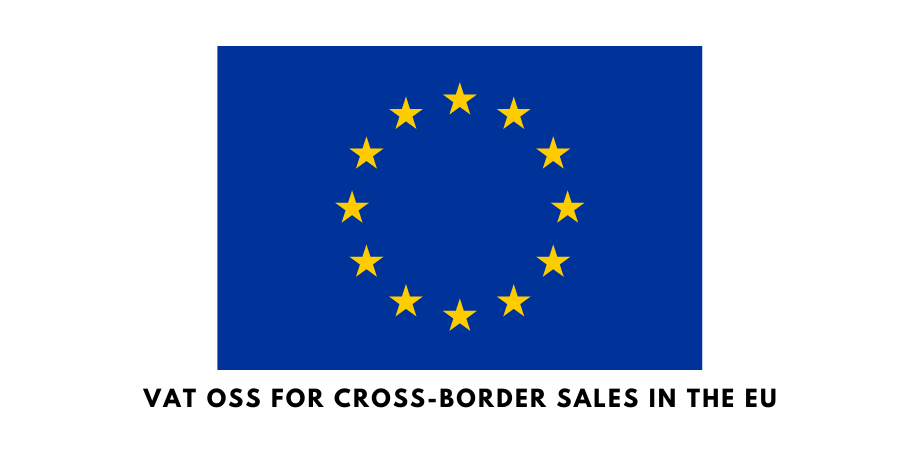The Guide to the VAT OSS (One Stop Shop) for Cross-Border Sales in the EU
The Guide to the new voluntary One Stop Shop (OSS) VAT scheme for Cross-Border Sales in the EU that has come into force on 1 July 2021.

The EU is introducing a new voluntary One Stop Shop (OSS) VAT scheme that has come into force on 1 July 2021. The change aims to reduce VAT fraud and create equal competition between EU countries and third (non-EU) countries. It mainly affects e-commerce businesses that sell goods to consumers in several EU countries.
Current VAT rules for cross-border sales within the European Union
Let us do a quick recap of the previous VAT rules worked when selling goods to consumers in multiple EU countries.
- Each EU country had its VAT threshold per calendar year. The business only needed to register for VAT and make a declaration if they exceeded the threshold in each country separately during a calendar year.
- Therefore, the business had to follow the VAT rules and thresholds in each country where the goods are sold. For example, if the business sold goods in several countries such as Spain, France and Germany, they had to register for VAT in each of these countries where the specified thresholds are exceeded.
The idea behind new rules was to make selling easier for small businesses so that they are not affected by high VAT rates in all the countries where they sell.
What is the MOSS scheme
MOSS stands for Mini One Stop Shop and is generally a predecessor of the OSS scheme. MOSS applied only to telecommunications, broadcasting and digital services and not to physical goods.
From 1 July 2021, all digital services are also covered by the OSS scheme, meaning there will no longer be a separate VAT scheme for digital services.
How does VAT OSS change the tax return from 1 July 2021
The new OSS scheme is voluntary to make VAT declaration easier for businesses.
The main idea of the OSS scheme is that the business selling goods to the final consumer (B2C sales) in the EU countries can only register for a VAT number in one country and not in all countries where the sales are made.
The OSS return is filed quarterly and separately from the domestic return VAT.
The thresholds currently in place in the EU are abolished from 1 July 2021. This means that for cross-border sales within the EU, the business will pay VAT from the first sale.
The OSS scheme can also be used by a third country business whose office is outside the EU and which does not have a permanent establishment in EU Member States. In this case, they must have an e-shop warehouse in one of the Member States from where they deliver the goods to the final consumers in the EU.
However, there is a threshold of €10,000 which determines whether the business pays VAT at the rate of the country of the seller or the end consumer. This applies to distance sales within EU Member States (all sales combined) and to digital services supplied to the final consumer.
So if the threshold of €10,000 is not exceeded, then the business pays VAT according to the country of the seller. If the threshold is exceeded, then VAT rates of the Member State of the end customer are applied.
What is IOSS for third countries importing goods into the EU
The EU has introduced the Import One Stop Shop (IOSS) from 1 July 2021. This scheme aims to simplify the declaration of low-value consignments imported from third countries for sale to EU end-users. The idea of IOSS is very similar to OSS. It means that a third country importing goods into the EU only has to register and pay for VAT when importing goods in one EU country, not in each country where the goods are sold.
Third countries are all other countries outside the EU and EFTA (European Free Trade Association).
Here is what the business should know about VAT when importing goods from third countries into the EU
- The exemption for importing shipments with a value of up to €22 is lost.
- The IOSS system can be used for goods whose value does not exceed €150 (excluding transport and insurance where these are not included in the price) and which are not subject to excise duty.
- A company using the IOSS system can add the VAT payable already at the point of sale (e.g. include the VAT in the e-shop prices). In this case, customers will not have any additional tax obligations when they receive the goods.
- If a third country business does not have a registered office or place of business in the EU, but wishes to register for the IOSS scheme, then it will need to find an intermediary to act on its behalf to fulfill the obligations associated with the IOSS scheme.
What if the business decides not to use the IOSS scheme
In that case, customers will probably pay VAT for the goods when they arrive. This is not always the case, as each country has the right to decide who is responsible for VAT for a shipment.
Therefore, it is important to check the VAT rules of each country the business imports to if they do not register for the IOSS system. The business decides whether the VAT is paid by the company, the consumer or the platform where the goods are sold.
VAT OSS does not apply to cross-border B2B sales
Note that the distance sales thresholds do not apply to cross-border business-to-business (B2B) sales. When selling goods to a company in another country within the EU, VAT does not need to be included in the invoice if the other company also has a valid EU VAT number.
If the customer does not have a valid EU VAT number, then the business should invoice them for the VAT that applies in the business' country.
What is the purpose of VAT OSS and who can benefit from it
As the name One Stop Shop suggests, OSS aims to make things easier for businesses. So instead of having to register and pay for VAT in all the countries where the goods are sold, the business only has to do it in one country. This in turn helps to reduce VAT fraud and, in combination with Import OSS (IOSS), creates a level playing field between the EU and third countries.
Therefore, this scheme is perfect for e-shops selling goods to the end consumer (B2C) in EU countries as it removes additional bureaucracy. Of course, the business will need to provide the accountant with the correct information about the sales from each country and the respective tax rates. This ensures that the correct information is submitted with the VAT OSS declaration.





